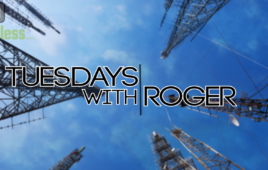The FCC’s 600 MHz spectrum auction finally closed up shop Friday, concluding after Round 58 with a total of $19.63 billion in auction proceeds for 84 MHz of spectrum.
New FCC Chairman Ajit Pai offered his congratulations to both forward and reverse winners on reaching a “major milestone in the world’s first incentive auction.”
“The participation of these broadcasters and wireless carriers will enable the Commission to release 84 megahertz of spectrum into the broadband marketplace,” Pai said. “These low-band airwaves will improve wireless coverage across the country and will play a particularly important role in deploying mobile broadband services in rural areas.”
Competitive Carriers Association CEO Steven Berry also hailed the end of clock phase as a success that opened up seven blocks of prime spectrum.
“CCA members look forward to a safe and efficient post-auction transition, and will continue to work with the Commission to utilize this spectrum for the benefits of consumers, carriers and the economy,” Berry said.
Incentive Auction Task Force Chair Gary Epstein said in a Friday blog the auction will provide more than $6 billion to the U.S. Treasury for deficit reduction, more than $10 billion to broadcasters that chose to relinquish spectrum usage rights, and up to $1.75 billion for other broadcasters that incur costs in changing channels. The $19.6 billion figure is the second-highest total proceeds of any Commission spectrum license auction.
While market bidding is now over, the proceedings will now head into the assignment phase in which winning bidders will have the chance to bid on specific blocks in certain markets. The FCC said it is planning to release a public notice within the next few business days with details about the assignment phase, the date and time bidding is expected to begin, and the availability of additional educational materials for participants. The Commission also reminded auction participants the quiet period rules will remain in effect through the process for both those who qualified to bid and those who actually became winning bidders.
Recon Analytics’ Roger Entner said the $19.6 billion total from the auction was a “reasonable price” but fell “far short of the inflated expectations of station owners.” And indeed, the price is far below the initial clearing cost of $86.4 billion for 126 MHz the reverse auction churned out. A look through the Stage 4 product status page also shows demand remained below supply in at least a handful of major cities, including Los Angeles and San Diego, as well as in places like Brownsville, Texas, Tucson, Ariz., Mankato, Minn., and Jackson, Tenn.
BTIG’s Walter Piecyk, however, noted the assignment phase process could raise auction proceeds even higher.
Once the assignment phase is over, the Commission will issue a Closing and Channel Reassignment Public Notice formally wrapping up the proceedings, and providing information on the results of the reverse and forward auctions, including winning stations and bidders, the prices paid, and frequencies won. The notice will also provide a date by which each station must transition off its pre-auction channel.
The release of the closing notice will also mark the start of the 39-month transition period, Epstein said.
According to Pai, the transition period will be just as important as the auction itself.
“Delivering on the promise of this auction will require a smooth and orderly post-auction transition,” Pai said. “That means we must ensure uninterrupted access to over-the-air television and a timely clearing of the new wireless band. We will devote a great deal of attention to those tasks over the coming months, and it will be a top priority of mine as Chairman of this agency.”
Filed Under: Telecommunications (spectrums)




